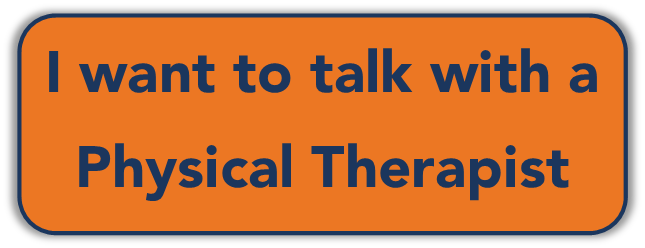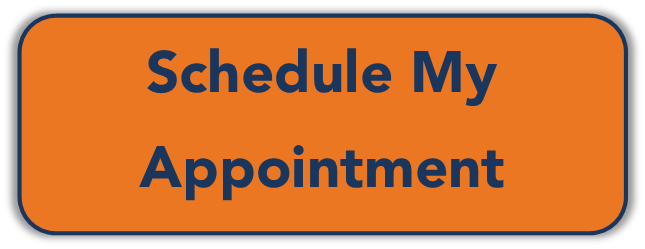Pelvic Floor Physical Therapy for Difficulty Emptying the Bladder
Pelvic Floor Physical Therapy in Oklahoma City, OK
Imagine this: you've finished a long workday and finally have a moment to relax at home. You head to the bathroom, anticipating the usual relief. But something feels different. You strain and push, yet only a little urine comes out. Frustration sets in, and you're left wondering what's going on.
This scenario, unfortunately, is a reality for many people in Oklahoma City and across the nation. While the thought of seeking help for such a personal issue can be daunting, know that you're not alone. And more importantly, there are effective solutions available. Pelvic floor physical therapy has emerged as a non-invasive and often highly successful treatment option for urinary retention, offering hope to those struggling with this frustrating problem.
FYZICAL Therapy & Balance Centers in Oklahoma City is here to help. Our team of skilled and compassionate physical therapists specializes in treating various pelvic floor dysfunctions, including difficulty emptying the bladder. Here, we delve into the world of pelvic floor health, exploring how physical therapy can help you regain control and find relief.
Introduction to Difficulty Emptying Your Bladder
When it comes to addressing difficulty emptying the bladder, it's essential to understand that physical therapy is not a one-size-fits-all solution. In Oklahoma City, Oklahoma, our specialized physical therapists follow a comprehensive approach consisting of five distinct phases to ensure patients receive the most effective and personalized care possible. These phases include the Evaluation and Assessment Phase, Pain Relief Phase, Improved Strength and Flexibility Phase, Optimizing Individual Function Phase, and the Maintenance and Prevention Phase. In this blog, we will delve into each of these phases to provide a comprehensive overview of what to expect during your pelvic floor physical therapy journey.
Pelvic Floor Physical Therapy Treatment for Difficulty Emptying Your Bladder
Phase 1: Evaluation and Assessment
The journey to better bladder function begins with a thorough evaluation and assessment conducted by a skilled pelvic floor physical therapist. During this initial phase:
-
Medical History: The therapist will take a detailed medical history to understand any underlying conditions or past injuries that may contribute to your difficulty emptying the bladder.
-
Physical Examination: A comprehensive physical examination will be performed, focusing on the pelvic region and musculoskeletal system. This assessment helps identify any muscular imbalances, weakness, or dysfunction.
-
Goal Setting: Based on the evaluation, the therapist collaborates with you to establish specific treatment goals that address your unique needs and concerns. These goals may include pain relief, improved bladder control, or enhanced quality of life.
Phase 2: Pain Relief
If you are experiencing pain or discomfort related to your bladder dysfunction, the second phase of physical therapy is dedicated to pain relief. However, it's important to note that this phase also applies to individuals without pain but with specific discomfort or a "pain point" related to their condition. In this phase:
-
Pain Assessment: The therapist continues to assess the nature and severity of your pain or discomfort, or just the severity of difficulty you have emptying your bladder, which may be caused by muscle tension, inflammation, or other factors.
-
Pain Management: Targeted interventions are employed to alleviate pain and discomfort, or to just make the difficulty of emptying the bladder less difficult. Techniques such as manual therapy, heat or cold therapy, dietary modifications, lifestyle habit recommendations, and gentle exercises may be utilized.
-
Education: You will receive education on pain management strategies and learn how to modify daily activities to reduce discomfort and make emptying the bladder a bit easier.
-
Bladder Habits: You'll learn strategies to optimize bladder habits, such as timed voiding and urge suppression techniques.
-
Lifestyle Modifications: Your therapist will provide continued guidance on dietary changes, fluid management, and posture adjustments to support bladder
Phase 3: Improved Strength and Flexibility
The third phase of physical therapy focuses on improving strength, flexibility, and overall health of the pelvic floor and surrounding muscles. This phase is crucial for regaining control and optimizing bladder function. Here's what to expect:
-
Customized Exercise Program: Your therapist designs a personalized exercise program that includes pelvic floor exercises, core strengthening, and stretching routines.
-
Progress Monitoring: Your progress is continually monitored, and the exercise program is adjusted to challenge you appropriately as your strength and flexibility improve.
-
Functional Training: Exercises are tailored to your specific goals, whether it's improving urinary flow, reducing urinary urgency, or addressing other bladder-related issues.
Phase 4: Optimizing Individual Function
As you make progress in the earlier phases, your therapist will shift the focus to optimizing your function. This phase is about enhancing your overall quality of life and addressing specific functional challenges related to your bladder function:
-
Functional Goals: Together with your therapist, you'll work towards achieving specific functional goals, such as being able to empty your bladder comfortably and efficiently.
-
Discover Your Best Function: You want to get to the point where your pelvic floor and core muscles are functioning at your best; that means that voiding is no longer a chore, and waking up at night is minimized. Figuring out the state your muscles need to be in, to optimize your stream and sleep will be a key focus before you graduate out of pelvic floor physical therapy.
Phase 5: Maintenance and Prevention
In Oklahoma City, physical therapy for bladder dysfunction emphasizes the importance of long-term care, similar to regular dental check-ups. The Maintenance and Prevention Phase is designed to ensure sustained results and prevent future issues:
-
Ongoing Care: Just like visiting a dentist every six months for oral health, patients are encouraged to schedule periodic follow-up appointments with their pelvic floor physical therapist. These appointments help monitor progress and address any new concerns.
-
Home Maintenance Program: You'll receive a customized home maintenance program, including exercises and self-care strategies to maintain your bladder health.
-
Preventative Education: Your therapist will educate you on strategies to prevent the recurrence of bladder dysfunction, empowering you to take an active role in your ongoing health.
 Conclusion
Conclusion
Difficulty emptying the bladder is a challenging condition, but specialized pelvic floor physical therapy by FYZICAL in Oklahoma City offers a comprehensive solution. By following the five distinct phases of physical therapy, you can experience relief from pain, improved strength and flexibility, and optimized bladder function. Furthermore, the emphasis on long-term care in the Maintenance and Prevention Phase ensures sustained results and a better quality of life. Don't hesitate to seek the expertise of a qualified pelvic floor physical therapist to embark on your journey toward improved bladder health and overall well-being.
FYZICAL Therapy & Balance Centers of Oklahoma City provides orthopedic physical therapy in Lakeside, The Village, Nichols Hills, and surrounding NW Oklahoma City. Our physical therapists are specially trained to treat all types of pain, movement disorders, and musculoskeletal dysfunction including difficulty emptying your bladder. Our practitioners take a patient-centered individualized approach that focuses on your health needs. If you are unsure about your pain, or you want to see the FYZICAL Difference for yourself, schedule a free consultation today.


